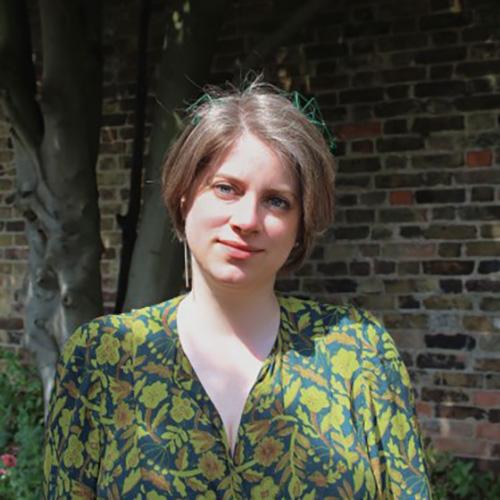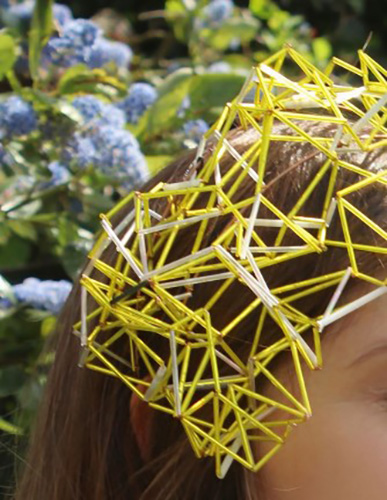

In an interview originally conducted for the BADA Young Friends magazine “Inherited.”, editor Beth Hodges meets milliner Lottie Fenby.
This month, Inherited. is exploring the craft of Millinery. Before we introduce this month’s maker in the spotlight, it is important for us to take a look at the rich history that has led Lottie Fenby to be in the profession she is today.
There has been a wide spread of societal circumstances that have moulded hats into the accessories and statements they are. The term milliner can be dated back as early as 1529, when ‘millaner’ was the title given to individuals who would import ribbons, gloves and straws into Milan and Northern Italian regions.
By the 19th century, millinery was dominated by highly feminine bonnets adorned with floral elements. In the 1920s and 1930s, women's hats evolved to compliment changing hairstyles, with tight fitted bonnets and turban-style pieces becoming popular.
The 1980s onwards saw public figures, especially the Royals, showcasing hats at public events. This has elevated hats to where they are today- art pieces, to be worn on special occasions, as a symbol of style and a means of expression. Hats are no longer seen as a means to conform to trends, but rather to stand out and express individuality.
Lottie Fenby’s pieces draw from numerous moments in history. Her atom like structures, are reminiscent of 1950s cocktail pieces, with aspects not dissimilar to Simone Mirmans pieces. In the 50s, fashion was influenced by scientific discoveries, with atoms and cell like structures inspiring patterns and structures. Lottie also uses a cap like form, which although altered, in terms of colour and angle, reminds one of the hair turbans in fashion in 1920s New York
Lottie Fenby Milliners
Hats have magical properties; when you find the right one it has the power to transform you.
You can stand out, you can hide in plain sight; a hat can give you flair or be your armour, femme fatale, detective, Pre-Raphaelite muse, the question is: who do you want to be today? And who am I? My millinery is inspired by my two great loves; music and people. I did a music degree at Cambridge University and later went on to study psychology. I wanted to take all the things that music taught me about love, passion, joy and despair and manifest them into physical objects.
I trained at Kensington and Chelsea College and have since worked for Stephen Jones, Harvy Santos, Piers Atkinson, Awon Golding and English National Opera among others. I aim to create pieces that inspire a transformation in the wearer. The hat is just the starting point – how will you continue the story?
 Firstly, please introduce yourself and your practice.
Firstly, please introduce yourself and your practice.
I’ve been a milliner for the past eight years, working on a variety of different projects; from making wild catwalk pieces in fashion millinery workrooms to bespoke commissions from private clients and fashion collaborations in my studio. Most recently I branched out into costume millinery and worked on Season Three of Bridgerton.
I love to see how a hat can transform a look and, through that, a person. Off the head it is just static object after all but once it is worn, it interacts with the wearer in a way that’s entirely particular to them to create a mood, a character, a heightening, a diminution – it’s a kind of alchemy.
Some people can feel intimidated by wearing a formal hat. So often when I say what I do I’m told ‘I like hats but they just don’t suit me’. I firmly believe there is a hat for everyone – if you are open to trying things on with a spirit of enquiry, you can find something great. I love that moment, when someone finds their hat (especially when it’s not the one they thought it would be) and I try to incorporate that spirit of curiosity and playfulness into the pieces that I make.
Can you describe how music inspires your work?
I often say that music is my one true love. I grew up with a lot of music and listening to and performing music really formed me as a person. I originally trained as a pianist, but temperamentally I wasn’t suited to the rigours of public performance – at the time I saw this as a disappointment but in fact it made way for me to embark on an amazing journey of self discovery to find ways of expressing myself creatively in other arenas.
My younger self would never have imagined that I would end up making headwear but I love this twist of fate, as it really taught me how rich and unexpected life could be. In terms of how music informs my practice now, I find that listening to live music, that feeling of being enveloped by the vibrations of sound, frees my mind and ideas just flow. If I ever have a creative block, I’ll stick on some music and it always seems to give me the answer – it feels suspiciously like magic
 What effect do you think your hats have on those who wear them?
What effect do you think your hats have on those who wear them?
I always try to create something that will empower the wearer on some level. As humans we are very focused on faces and so wearing something on your head can make quite a statement, as it draws the eye. Some people love this and love the attention that a hat can bring, but others feel exactly the opposite so the starting point for me is always; what does this customer need from a hat – who do they want to be?
I do think hats can have transformative powers in this way; you can wear something that will get you noticed or something that will hide you; you can wear a hat that does both simultaneously and this creates the possibility of exploring different parts of yourself.
Actors often talk about the importance of putting on the shoes of their character to begin embodying them and I think it is the same with headwear; it allows you to accentuate some things, conceal others and project a particular mood or image. Ultimately, my goal always is to remain playful and to create something that the customer will be excited to put on and feel comfortable wearing.
Could you tell me about your design process?
The starting point for any project is always to put together some image references. These are always non-hat related, often images of natural phenomena, to essentially set the scene. From there I can begin to generate ideas. My pieces tend to be quite structural and so although I will start with an initial sketch, for me toiling my ideas and sampling with different materials are where the real design development takes place.
That is the space in which I can experiment with different proportions, textures and angles so that I can determine whether something will work on the head from all angles and can actually be worn! It also very much depends on the brief – there’s always a subtle dance between what a client wants and your interpretation and realisation of that and the union of those two things.
 How did you learn the art of millinery?
How did you learn the art of millinery?
In 2008, in search of a creative outlet, I signed up to a five day millinery course at Central St Martins. Little did I know at the time that this would be first step of a journey that would ultimately lead to a whole new career. I had studied music at Cambridge University and had been working for the BBC Singers for several years, but one short course led to another and by 2015 I had completed an HNC in millinery at Kensington and Chelsea College, quit my job and decided to pursue millinery full time.
I did internships with Harvy Santos and at English National Opera before joining Stephen Jones’ model millinery department, making couture hats for designers such as Thom Browne, Dior, Schiaparelli, Moschino and Marc Jacobs. I went on to do freelance work for designers such as Awon Golding, Piers Atkinson, Hood London and Vivienne Lake. I feel very fortunate to have had some really inspiring and supportive teachers when I was starting out. I’m so grateful to them as I think when you first start exploring your creativity, particularly in an educational setting, it can often be quite daunting.
There’s a certain fragility to presenting your work for assessment, as it’s essentially a piece of you. Everyone comes to a creative practice with different skills, experiences and techniques and so there’s always something to learn. I’ve worked with some incredibly talented and generous crafts people over the years and can honestly say that I think I’ve learned something from everyone I’ve worked with.
Are your creations personal to you?
I think everything handmade is always personal to the individual who makes it on some level. No matter whether you are working on your own design, where your particular style will be more obvious, or following a strict brief, whatever is created has been made by your hands and so will somehow have your particular imprint on it.
Everyone’s hands work differently, so even if you asked two milliners to make two identical hats you would be able to detect subtle differences – the stitch, the tension of the thread etc. I think this is one of the nice things about objects made by hand; there’s always a part of the maker that goes into it.
When I was at college, at the end of each project everyone’s work would be displayed for assessment. I remember noticing that you didn’t need to see the labels of who had made what because the pieces told you – they were a small piece of the person who had made them. I always found there was something really beautiful in that.
Do you have any advice on how to make a career in designing accessories or wearable art?
There are many different routes to a creative profession but there is no such thing as the ‘right way’ to go. To make a career out of any artistic endeavour takes a lot of discipline and dedication but if you can truly commit to your craft, get a solid foundation, keep honing your skills, stay curious and learn from as many people as you can, anything is possible.
Click here to visit Lottie Fenby’s website.
Receive similar articles straight to your inbox by subscribing to Inherited. below.

